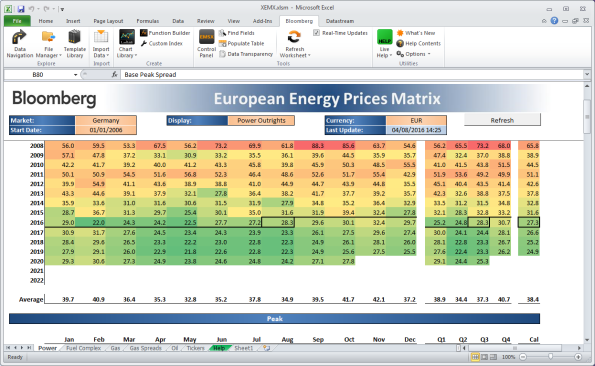Work Term #1: Recommender systems and chatbots

Anything I say here is my own words, and does not represent Bloomberg LP. All images inside this post can either be found online or are public information.
Click here to learn more about my overall experience at Bloomberg.
Desktop API / Excel Add-In Team
In Summer 2017, for my first co-op term, I joined the Excel Add-In team, also known as Desktop API. The Bloomberg Terminal comes with an Excel Add-In, allowing for users to import financial data from Bloomberg straight into their Excel spreadsheets and perform financial analysis. This includes both historical data in addition to real-time (for which the Excel cells update in real-time). There was a wide gamut of other features as well, such as charting and templates for financial documents.

My first project was developing a machine learning collaborative filtering recommender system to generate personalized recommendations for the 250,000+ monthly Excel Add-In users in terms of which Excel Add-In functions they should try. This was part of “Feature Explorer”, in an effort to make the users to become acquainted with the various functions Bloomberg provides in their Add-In. As part of my project, I worked with Python and several scientific/machine learning frameworks and libraries including NumPy, SciPy, Matplotlib and Scikit-Learn.
I initially prototyped several different approaches to solving this problem, but after guidance from members of Bloomberg’s data-science teams we settled on an approach using statistical analysis on different clusters of users based on Bloomberg Terminal data. While I cannot go into details of the algorithm, some neat optimizations included lazily precomputing recommendations per-cluster instead of per-user, such that only once the service is queried - then it would lookup the historical feature usage data for that user and provide a recommendation. This significantly sped-up training time for the algorithm, while generating the recommendations remained near-constant time.
After completing my first project I received another one, which was prototyping chatbot approaches for generating associated BQL (Bloomberg Query Language) queries for financial questions. Since my team was heavily invested in the Microsoft ecosystem it was worth testing their newly released Microsoft Bot Framework, which leverages their Cognitive Services suite for ML/NLP.
This project was much simpler in terms of data-science, but more challenge in terms of software engineering. The chatbot had many moving components which meant having a solid architectural design was critical. Examples include handling the user-interaction (localization, user interface, chatbot dialogs), fetching financial data from Bloomberg, fetching ML/NLP information from Cognitive Services and other sources, generating the BQL queries, all while ensuring everything is modular and adding/removing functionality can work flawlessly. It was surprisingly a lot of code, but I worked in Node.js which was fairly straightforward and fun to work with.
All in all, I enjoyed my first real work-term and had a helpful mentor and manager who were very supportive and provided feedback. I learned a lot about machine learning and web development in this internship, both of which I found very fascinating and will be useful tools for the future.